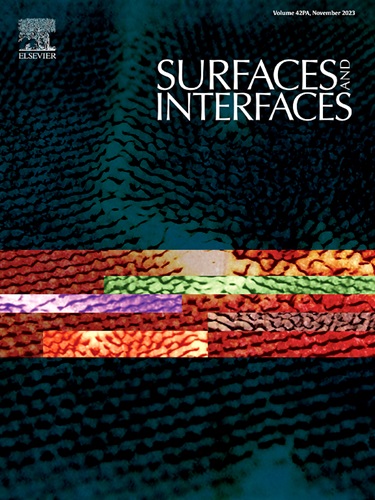Surface modifications of inert and bioactive glasses with plasma-deposited polymer coatings to impart antiadhesive properties
IF 5.7
2区 材料科学
Q2 CHEMISTRY, PHYSICAL
引用次数: 0
Abstract
The development of antiadhesive surfaces has attracted great interest in recent years, both in the biomedical field and in everyday life applications. Non-thermal atmospheric plasma technology, still slightly explored in particular on bioactive glass, offers important opportunities for limiting bacterial adhesion on materials’ surfaces. In this work, both bioactive and inert glasses were coated with (HMDSO) using the non-thermal atmospheric plasma process. The obtained coating was carefully investigated through morphological and compositional analysis, and the evaluation of the surface roughness wettability and zeta potential. Moreover, the influence of the coating on bioactivity (for bioactive glasses) was estimated and a preliminary test to investigate the antifouling properties of treated samples was performed using a Multi-Drug Resistant (MDR) Staphylococcus aureus strain. The obtained results evidenced a reduced roughness and a uniform distribution of the polymer on all glasses’ surfaces, which imparted a hydrophobic effect due to the exposure of CH3 groups. The bioactivity kinetics of the treated samples slightly decreased; however, the hydroxyapatite (HAp) precipitation was highlighted after 7 days of immersion in SBF. Finally, all plasma treated glasses showed a significant reduction in the number and aggregation degree of viable surface-adhered MDR S. aureus.

求助全文
约1分钟内获得全文
求助全文
来源期刊

Surfaces and Interfaces
Chemistry-General Chemistry
CiteScore
8.50
自引率
6.50%
发文量
753
审稿时长
35 days
期刊介绍:
The aim of the journal is to provide a respectful outlet for ''sound science'' papers in all research areas on surfaces and interfaces. We define sound science papers as papers that describe new and well-executed research, but that do not necessarily provide brand new insights or are merely a description of research results.
Surfaces and Interfaces publishes research papers in all fields of surface science which may not always find the right home on first submission to our Elsevier sister journals (Applied Surface, Surface and Coatings Technology, Thin Solid Films)
 求助内容:
求助内容: 应助结果提醒方式:
应助结果提醒方式:


